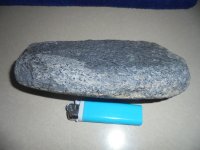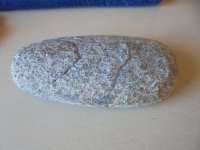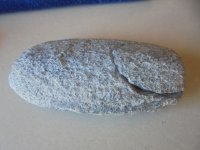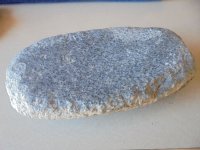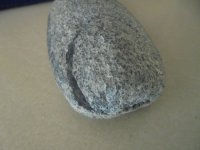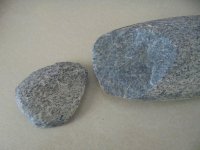This artifact was found on a second trip to a point that used to be along a heavily used portage route in New Brunswick. This was found in the water only a few feet off shore. I think I see repeated pecking to make a bowl shape, and all around the edge of the upper surface has been ground. The overall pentagon shape looks like it was broken out purposefully, with one flake in the bottom corner really apparent. I would like to know what this may have been used for. Is this something that can be dated to any time period?
I'm also including a couple more detailed pictures of a hammerstone/mano I had already posted, found in the same location. Can anyone identify what type of stone it is? It weighs 22 oz.
I will add links to albums with more pictures of each, including bic lighter for scale.




More pictures: https://imgur.com/a/05ZP2F2



More pictures: https://imgur.com/a/su6JwAr
I would also like to thank Tdog and smokeythecat for help in the last thread. I appreciate all the knowledge on this forum!
I'm also including a couple more detailed pictures of a hammerstone/mano I had already posted, found in the same location. Can anyone identify what type of stone it is? It weighs 22 oz.
I will add links to albums with more pictures of each, including bic lighter for scale.




More pictures: https://imgur.com/a/05ZP2F2



More pictures: https://imgur.com/a/su6JwAr
I would also like to thank Tdog and smokeythecat for help in the last thread. I appreciate all the knowledge on this forum!
Amazon Forum Fav 👍
Upvote
0


